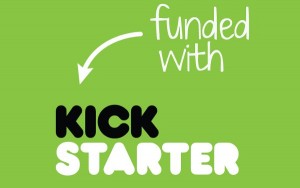Funding Films Through Kickstarter
When making a film, any type of film, one of the hardest tasks to tackle is funding. How am I going to fund this project? With a million and one things to think about such as actors, wardrobe, location, budget, equipment, crew, etc., I mean, the list goes on and on. Unless you have major funds of your own or are lucky enough to have funding from an outside source, it can be enough to make you crazy in an already not so sane business. Recently, more and more aspiring filmmakers, independent or not have been turning to a fairly new but surprisingly viable source: Global Crowdfunding.
Global crowdfunding experienced accelerated growth in 2014, expanding by 167 percent to reach $16.2 billion raised, up from $6.1 billion in 2013. In 2015, the industry is set to more than double once again, on its way to raising $34.4 billion. These are the latest figures from Massolution’s 2015CF – Crowdfunding Industry Report. One of the most popular crowdfunding platforms is Kickstarter. For those not familiar with this innovatively brilliant concept, Kickstarter is a global crowdfunding platform based in the United States, headquartered in New York. The company’s stated mission is “to help bring creative projects to life.” Kickstarter has reportedly received over $1 billion in pledges from 5.7 million donors to fund 135,000 projects, which include films, music, stage shows, comics, journalism, video games, and food-related projects. Kickstarter is the world’s largest funding platform for creative projects. It was launched in April, 2009, and has been exploding ever since. There are other platform vehicles that operate with similar strategies, such as Go Fund Me, Amazon, and the like, but Kickstarter has far and away been the most successful to date. According to crowdsourcing.org, “business and entrepreneurship remained as the most popular crowdfunding category, collecting $6.7 billion in 2014, which represents 41.3 percent of total crowdfunding volume. Social causes ($3.06 billion), films and performing arts ($1.97), real estate ($1.01 billion), and music and recording arts ($736 million) rounded out the top five categories.”
Here’s how it works. Kickstarter takes 5% of the funds raised. Amazon charges an additional 3–5%. Unlike many forums for fundraising or investment, Kickstarter claims no ownership over the projects and the work they produce. The web pages of projects launched on the site are permanently archived and accessible to the public. After funding is completed, projects and uploaded media cannot be edited or removed from the site.
However, keep in mind, there is no guarantee that people who post projects on Kickstarter will deliver on their projects, use the money to implement their projects, or that the completed projects will meet backers’ expectations. Kickstarter advises backers to use their own judgment on supporting a project. They also warn project leaders that they could be liable for legal damages from backers for failure to deliver on promises. Projects might also fail even after a successful fund raiser when creators underestimate the total costs required or technical difficulties that may present themselves.
Having said all that, it is important to note that everything is not for everybody. This may or may not be a viable option for you in your quest to become a filmmaker, but keep it in mind when staying up at night wondering “Where am I going to get the money to fund this film?” You could be halfway through filming and realize you’re running out of funds, or you’ve already de-pleated your allotted budget. Simply, consider Kickstarter or the various other funding vehicles at your disposal when weighing your options. Do your research of course, however one more resource for cash certainly cannot hurt.







